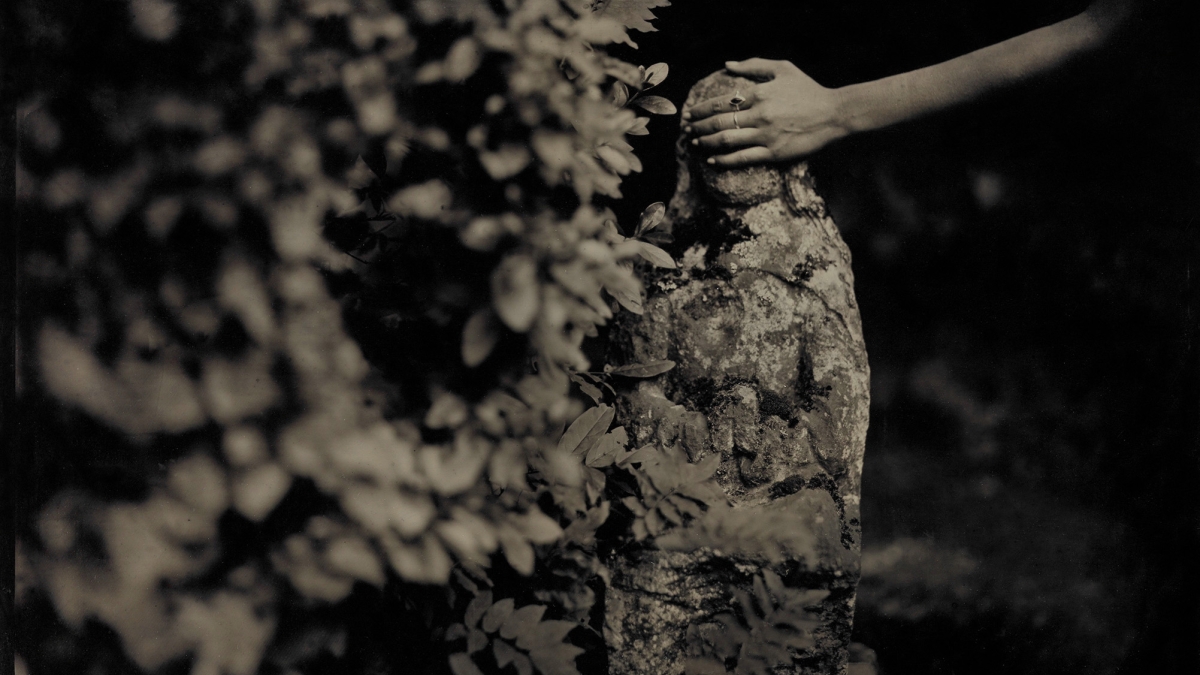Día de los Muertos — or Day of the Dead — is a predominately Mexican holiday and is observed in various ways and under different names across the world. In recent years, it’s been depicted in mainstream media and adopted by diverse populations in different regions.
Over the span of two days, every Nov. 1–2, families come together to remember and honor the deceased with a celebration that includes visiting gravesites, placing decorations, placing orange Mexican marigold flowers and leaving offerings, or ofrendas, such as food and drinks. This could also include placing memorabilia and photographs of the deceased as a remembrance.
How do photographs keep a memory alive and does it help with loss?
Ashley Czajkowski is a lecturer at ASU’s Herberger Institute for Design and the Arts and teaches a special digital photography course – "Death and Photography" – through ASU Online. Driven by personal experience, her research explores social constructions related to femininity, mortality and the psychological manifestation of and the human-animal.
We spoke to Czajkowski about photography, the importance of capturing a moment, why it matters and the concept of “living forever.”
Question: How are photographs linked to memory and mourning?
Answer: Photographs are intrinsically linked to memory and mourning. In fact, many often think about photographs as memories — they are moments captured in time — often sentimental or at least meaningful enough that we want to save an image of that experience.
However, like memories, the meaning of photographs is not fixed. This can shift and change over time, their relevance and associations affected by the current situation in which they are viewed.
Photographs can function in mourning through this aspect — once a loved one has passed, suddenly images of them become more precious, objects now used for honoring and remembrance of those we have lost. These images transform into memorials, celebrating the lives of those who have passed, ensuring their legacies and immortalizing their memory.
Q: How can someone use art to move through the difficult and scary aspects of life such as death?
A: Art can be a powerful tool to approach and move through the difficult and scary aspects of life, such as death, both for the artist and those who experience the artwork. I believe the most powerful works of art are vulnerable, personal, but also relatable. Art can create a sense of connectedness and community, to not feel alone in grappling with such complex life situations. In this way, art and photographs are tools of healing for both the artist and the viewer.
Q: Can the art, in this case a photograph, be both healing to the artist and the viewer of the art? How so?
A: For artists, and really for anyone, the act of creation — whether it is making a photograph, a painting, a poem or a pie — can be a cathartic act. Being able to produce something tangible out of the feelings of uncertainty, fear or loss can help us to process those difficult and complex emotions.
For viewers, artworks that represent death or other difficult to discuss topics can help others to feel validated via this shared experience.
Q: Afterlife and postmortem photography — we see these images in history. Have you seen an evolution around these types of images?
A: There is a long history that connects photography and death, particularly in 19th century postmortem photographs. These kinds of images were popular at the time primarily because photography was not as prevalent — it was early in its life as a medium and images were not nearly as easy to create, so oftentimes a postmortem photograph was the only image of that person ever made. These images served as almost evidence of that individual's existence and quickly began to be used as objects of remembrance and mourning as well, the height of this being in Victorian times.
As the ability to make photographs became more and more accessible, and as Western society relegated death to be more and more of a taboo subject, the prevalence of postmortem photographs declined. However, serious contemporary artwork about death has been expanding.
We are living in unique and extraordinary times, and there is a growing need to learn how to come to terms with mortality. A common Latin phrase popular in Victorian times is “memento mori memento vivere,” which loosely translates to “remember you must die, so remember to live.” This sentiment affirms that facing the certainty of death has the perhaps unexpected effect of embracing life.
Top photo: "Me and the Moss-Covered Virgin Mary," 2017. Artwork by Ashley Czajkowski.
More Arts, humanities and education

ASU instructor’s debut novel becomes a bestseller on Amazon
Desiree Prieto Groft’s newly released novel "Girl, Unemployed" focuses on women and work — a subject close to Groft’s heart.“I have always been obsessed with women and jobs,” said Groft, a writing…

‘It all started at ASU’: Football player, theater alum makes the big screen
For filmmaker Ben Fritz, everything is about connection, relationships and overcoming expectations. “It’s about seeing people beyond how they see themselves,” he said. “When you create a space…

Lost languages mean lost cultures
By Alyssa Arns and Kristen LaRue-SandlerWhat if your language disappeared?Over the span of human existence, civilizations have come and gone. For many, the absence of written records means we know…



